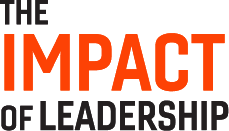A Recipe For Empathy & That Time I Got Staples In My Head
- Blog A Recipe For Empathy & That Time I Got Staples In My Head
“The bridge we emotionally cross to connect with other humans.” Shelly Smith, LMFT
There it is, a definition for empathy that’s concise and easy to restate. But you don’t just teleport to the bridge. There are precursors to building a bridge of empathy.
In episode 99 of The IOL podcast, Shelly goes beyond the definition given above to help us know if we’re on track or not.
“Empathy and vulnerability are two parts of the same equation. Empathy and vulnerability work in conjunction, so we can’t have one without the other. They’re the core of all human interaction. Humans connect on an emotional level, whether we like to or not; that is how we interact with each other.”
She goes on to say, “we have to let the wall down a little bit to experience empathy. And there can’t be vulnerability without it being safe.”
That’s a lot. And helpful.
Here’s a recipe for empathy:
Proven Safety + Demonstrated Vulnerability = Empathy.
This might hurt a little
When I was 8, we had a gravel road directly from the church parking lot to our house. One Sunday, I walked home ahead of my Mom leaving. As I was walking, I came up with an idea- I would jump on the bumper of our van and surf it home. And it was going to be awesome.
When I heard the van hit the gravel, I jumped behind a big tree and waited. My Mom knew I was there, so she slowed down, and once she passed me, she sped up, thinking she was in the clear. That 3-second window of her passing me going slow and then speeding up was when I jumped on.
I got on the old Astro van no problem, holding on the ladder that went to the roof. (I still don’t know what that was for). But then she hit the gas, not knowing I was on the back. My hand slipped off the ladder, and I busted my head open on the gravel road.
I bounced up, ran the rest of the way home thinking, “My Dad’s going to kill me!” with blood pouring out of my head. I got to the house just as my Mom put her first foot on the driveway.
When we got to the doctor, it was announced that I needed several staples to close the wound. I was fine and thought it’d be fun to try and stick a magnet to the staples when we got home. Then he brought out the needle for my tetanus shot. It was huge.
My palms were sweaty, I felt a little sick, my ears got hot, and tears burned in my eyes. Needles scared me in my soul. The doctor explained what he was going to do and then said, “this is going to sting a little, but it’ll make sure things don’t go from bad to worse.”
Why tell that story? Well, it’s a good one and is only the 1st of three times I needed stitches or staples in my head. But it also caused something to rise in you as you read it. I’m betting several things.
- Now you know a bit of my childhood which reminded you of pieces from your childhood.
- You probably thought of dumb stuff you or your siblings did
- My fear of needles seemed familiar to you. You’ve been afraid before
- You wondered what my Mom did when she saw me
- You might even feel like you know me
Putting it together—go first.
You can’t have safety without trust. You can’t have vulnerability without safety. You can’t have empathy without vulnerability.
Vulnerability might hurt a little. Fear will try and keep you from giving a bit more information than you did last time. But you know it’ll help build trust, and you’re a leader. So you’re going to go first.
A few ideas:
- Tell work people about your family, what went well this weekend and what didn’t
- Admit a failure in the next meeting you lead and what you learned from it
- At dinner, ask questions that your family isn’t expecting
- Embrace that awkward moment with relatives over the holidays, lean into it and engage rather than pull away
- Apologize, and ask for forgiveness (this includes parents with your kids!)
- Keep your word, even in small things
- Say, “that sounds rough. How are you doing now?” Rather than offering solutions
- Listen
- Laugh at yourself when surfing the van turns into a bloody church shirt.
Want More?
Listen to the full episode with Shelly Smith here here
Follow IOL on Linkedin
*JOIN US FOR A LIVE EVENT ON FEBRUARY 9TH*
Resilient Leadership: Leadership in Uncharted Territory
With guest speaker Tod Bolsinger!
Register HERE
Use discount code: MEMBER23 for 15% off registration
Related Content




Comments